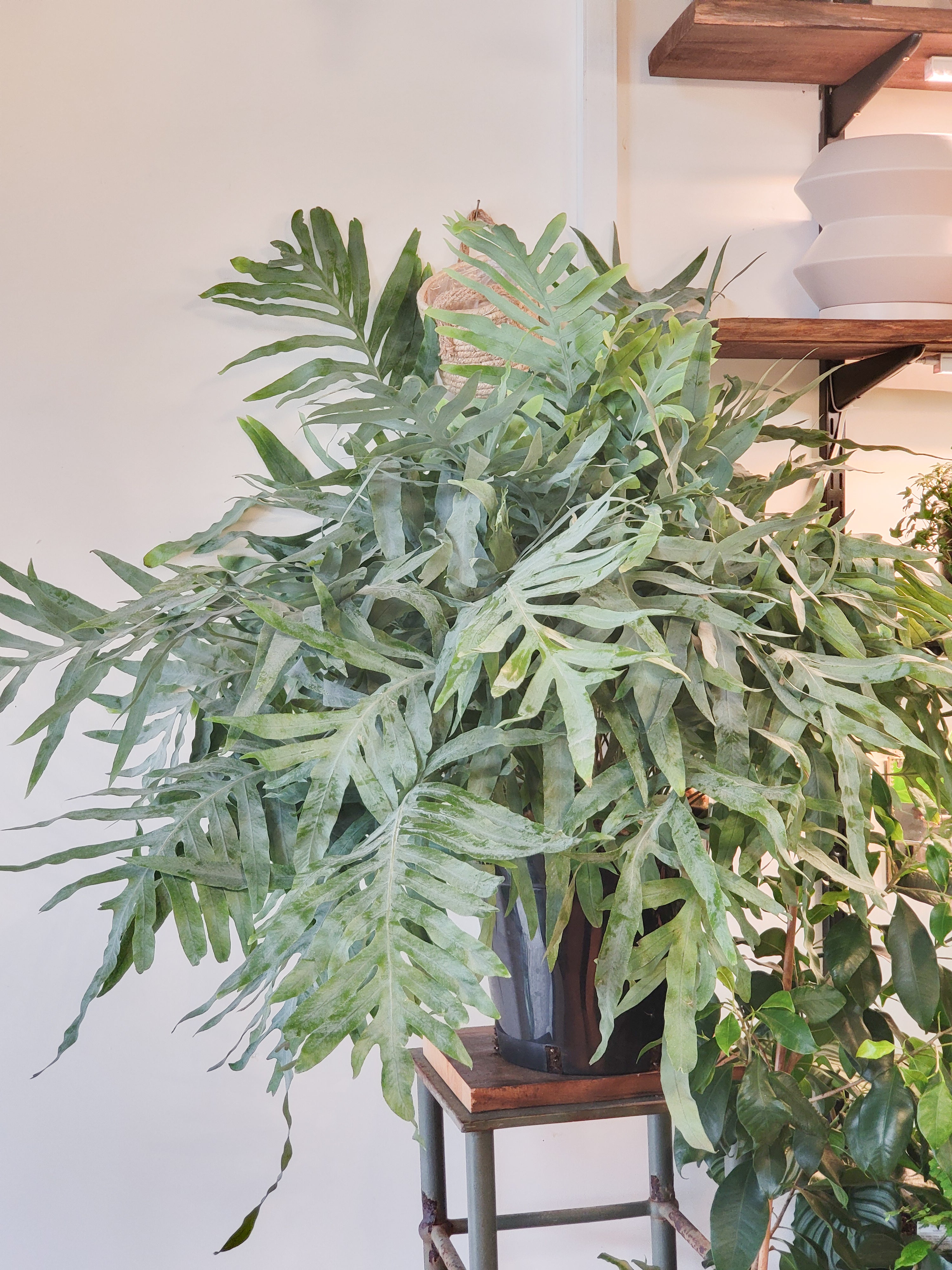How to CARE and GROW Philodendron Heart-Leaf
PHILODENDRON HEDERACEUM
(fil-oh-DEN-dron hed-er-ah-see-um)
The heart-leaf philodendron (Philodendron hederaceum), known as the sweetheart plant, is a tropical evergreen from South and Central America and the West Indies. It is a popular houseplant, offering year-round beauty and easy care. The leaves are dark green but when they first emerge they're often bronze-colored, giving this plant plenty of visual interest.
| Common Name | Heart-leaf philodendron, sweetheart plant |
| Botanical Name | Philodendron hederaceum |
| Family | Araceae |
| Plant Type | Perennial |
| Mature Size | 30-90cm wide, 90cm - 4m long |
| Sun Exposure | Partial |
| Soil Type | Well-drained |
| Soil pH | Acidic, neutral |
| Reproduction | Sexual |
| Native Areas | Tropical Central and South America |
| Toxicity | Toxic to humans and pets |
Light
This plant loves to bask in bright, indirect light, so pick a spot inside without direct sunlight. Beware too much sun may crisp those leaves! This plant is a tolerant grower and will survive in low to medium lighting conditions, keep in mind with lower light levels will come smaller leaves, slower growth and more distance between each node.
Potting media
Use a good basic potting mix with chunky bits. You can add some perlite or pumice for better drainage, chunky bark or orchid bark is another great option. You can make your potting mix by combining a base mix and adding some of the following; perlite, vermiculite, bark, pumice, coconut fiber. Soilless mixes do not contain any nutrients (compost etc), so you'll need to provide some slow-release fertiliser or weekly/monthly liquid fertiliser.
Water
Be careful not to overwater (water too often). If the leaves turn yellow, that's usually a sign of overwatering or the potting mix staying wet for too long. Let the potting mix dry out approx 2-4inches down between waterings, and make sure you choose a container that has good drainage. If you have a decorative planter with no holes, keep your plant in a plastic nursery pot and slip it into your decorative pot. This will help with air flow and drainage-just remember to remove the excess water build up.
Fertiliser
You can apply a liquid fertiliser solution once or twice a month during the active growing season in spring and summer. During winter if your plant is seemingly still growing you could feed your plant a weak dilution of liquid fertiliser.
Pruning
Trip off growing stems if you'd like the plant to remain bushy and full instead of growing in one long stem. Pinch off just above a leaf node; the plant will branch out from this point (may also activate other nodes further down). Other than this, the only pruning required is to remove dead or yellowed leaves (please keep in mind if your plants' leaves are going yellow/brown you need to figure out why and not just cut them off or it will carry on)
Propagating Heart-leaf Philodendron
This plant is very simple to propagate by rooting stem cuttings. Here's an easy method:
- In spring or early summer, take three to four-inch cuttings from the tips of stems, ensuring there are at least three leaves attached. Trim just below a leaf node.
- Put the cutting in a container of water and allow roots to form in indirect light.
- Place the rooted stem cuttings in a pot with clean, free draining potting mix, and keep moist until new growth appears.
Potting and Repotting Heart-Leaf Philodendron
This plant does pretty well in most potting mixes, chunky, free draining mix is best. You should repot your heart-leaf philodendron every two to three years to help keep the plants' root system healthy and give it space to grow, generally speaking the Heart Leaf can manage being pot bound for a while. Gently loosen the potting mix around the root system and add new chunky potting mix to the new container. Water the plant lightly after settling it into its new pot.
Overwintering
Watering should be slightly reduced for the winter months. Less light means the plant will use less water. If you are growing a heart-leaf philodendron near a window or door, it is important to protect it from cold droughts. If you have moved the plant outdoors for the warm season, make sure to bring it back indoors as temperatures begin to dip.
Common Pests & Plant Diseases
Aphids, thrips, mealy bugs, scale, and spider mites are all common pests to many houseplants, can also be a problem for philodendron plants. Given the opportunity these pests will seek shelter in the foliage and under the leaves. A two way systemic insecticide spray used along side a oil base spray will help kill the pests' cycle.
Toxicity
Some parts of the plant have calcium oxalate crystals in different levels of concentration. The calcium oxalate crystals are digested in organs like the kidneys, and in serious reactions can potentially leading to heart-related problems in people, if consumed excessively. While the plant is harmful to mice and rats, there is conflicting information about its effects on cats.
While Philodendron species can be harmful if ingested, they are also known for their potential therapeutic applications in medical research, this reputation comes from terpenoids and flavonoids, natural compounds with antioxidant, anti-inflammatory, and disease prevention properties.
FAQ
What is the difference between a Pothos and a Philodendron?
Because the leaves have a very similar look, roughly heart-shaped and trailing. Heart-leaf philodendron is often mistaken for a pothos which is the colloquial name for the Epipremnum genus.However, Pothos plants' leaves are narrower, thicker, and waxier, also less dramatic inward curving than Heart-Leaf. If your plant shows yellow or variegated leaves, it's more likely a pothos rather than a heart-leaf philodendron.
How long does a heart-leaf philodendron plant live?
With a little care, a heart-leaf philodendron can thrive for decades.


























